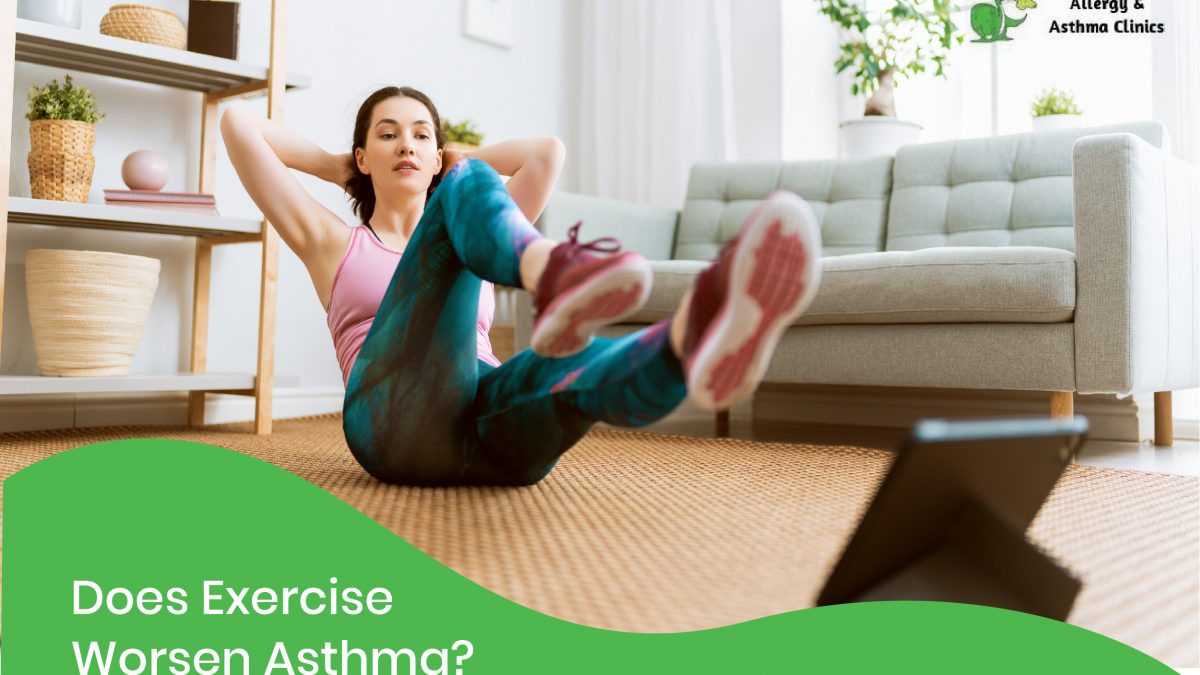- 979-485-9287
- office@bvallergy.com
-
 979-251-7804
979-251-7804
Does Exercise Worsen Asthma?

How to Treat Allergy Headaches
June 17, 2022
Latex Allergy: Know the Signs and Symptoms
July 27, 2022Overview
Exercising and physical activities are essential parts of our overall health. Most of us exercise to stay fit and look good. However, it’s another story if you have asthma. Rigorous exercise sometimes triggers asthma attacks. When you feel out of breath, accompanied by wheezing and an unusual chest tightening or discomfort after working out, you may be experiencing exercise-induced bronchoconstriction.
Don’t worry. You don’t have to avoid your regular exercise routine because of asthma. We’ll help you understand how to manage asthma and maintain a physically active lifestyle. This article will guide you in understanding exercise-induced bronchoconstriction and how to live with it. So, without further ado, let’s start our discussion.
What is Asthma?
Understanding asthma plays a crucial role in avoiding triggers and managing symptoms. Here’s asthma by definition: Asthma is a respiratory condition that occurs when your airways begin to narrow and produce extra mucus. Anyone with asthma may have difficulty breathing during an asthma attack.
Signs and Symptoms
- Shortness of breath
- Chest tightness, pain, or discomfort
- Wheezing (exhaling) is a common sign of asthma in children
- Coughing or wheezing becomes worse by a respiratory virus, like a cold or the flu
- Trouble sleeping due to wheezing, shortness of breath, coughing
Does Exercise Worsen Asthma?
Now that you understand asthma and its symptoms, it’s time to answer the question: “can exercise trigger an asthma attack?”. The answer is “no.” However, exercising with asthma may trigger an asthma attack. It doesn’t mean that exercise makes it worse, but it does trigger its symptoms.
Understanding Exercise-Induced Bronchoconstriction
People with chronic asthma may experience exercise-induced bronchoconstriction with a prolonged and vigorous workout. However, people without chronic asthma may develop symptoms while exercising.
During rest, people breathe with their noses. The air they inhale gets warmed and moistened by their nasal passages. On the other hand, people who exercise usually breathe with their mouths. However, the air they breathe is cold and dry, irritating their airways.
In exercise-induced bronchoconstriction, the muscles of the airways become sensitive. The muscles drastically react to the changes in humidity and temperature that typically narrow the airways. The symptoms are as follows:
- Shortness of breath
- Chest tightness and discomfort
- Wheezing
- Persistent dry cough
Talk to your doctor when you experience these symptoms during or after exercising.
Should I Stop Exercising?
No, you should not stop exercising even if you experience the symptoms of exercise-induced bronchoconstriction. In fact, some exercises can help reduce its symptoms. Here are the reasons why:
Reduces Airway Inflammation
Since asthma causes inflammation of the airways, exercising reduces the production of inflammatory proteins, improving your airway’s response to the temperature changes during exercise.
Improves Lung Performance
The more you exercise, the more your lungs adapt to the changes. Your lungs become more capable of consuming oxygen, making them more resilient. In addition, they don’t have to work harder to provide you with the oxygen you need.
Increases Your Exercise Endurance
Your endurance significantly boosts when your body adjusts to exercise and physical activities. Your lungs can tolerate stress levels from exercising, giving you more stamina to perform better. As a result, you won’t get winded or tired easily, helping you deal better with shortness of breath.
Ideal Exercises to Manage Exercise-Induced Asthma
Here are ideal exercises that people with asthma can enjoy:
Walking
Regular walks are beneficial to your health, especially for people with asthma. Walking is a low-intensity exercise that is good for the respiratory system. It activates your muscles and makes it easier for you to breathe.
Swimming
Doctors highly recommend swimming to people with asthma. Swimming decreases triggering exercise-induced asthma symptoms. Use pools with natural water instead of the ones with chlorine. Some individuals may experience adverse effects from chlorine exposure.
Indoor Cycling
One of the best ways to strengthen your breathing capability is indoor cycling. It’s also low-intensity and safer than cycling outside. The key here is minimal exertion to keep asthma symptoms at bay.
Exercise and Asthma Management Tips
Here’s a compilation of the best tips to prevent and manage an exercise-induced bronchoconstriction attack:
- Use your doctor’s prescribed “rescue inhaler” medication before exercising
- Perform warm-up stretches before you start and cool down after
- Don’t forget your long-term medication for asthma if you have any
- Wear a mask if you plan to do outdoor exercises
- Learn your local pollen count, do not exercise outside when the pollen count is high
- Perform only light activities and avoid physically demanding sports like basketball, long-distance running, or football
- Take a breather when you need one
When to See a Doctor
It is best to go to a doctor when you experience the symptoms discussed above. The initial effects of exercise-induced asthma may be mild, but it may lead to complicated cases. Asthma should never be taken lightly.
Manage Asthma and Live Your Life to The Fullest
Your journey to a better lifestyle begins at Brazos Valley Allergy & Asthma Clinics. Our allergists start with accurate allergy testing to provide you with the personalized treatment you deserve. We specialize in asthma management with years of experience and a proven track record.
You can book an appointment with our allergists today by clicking this link. You can also reach us by calling 979-485-9287.




